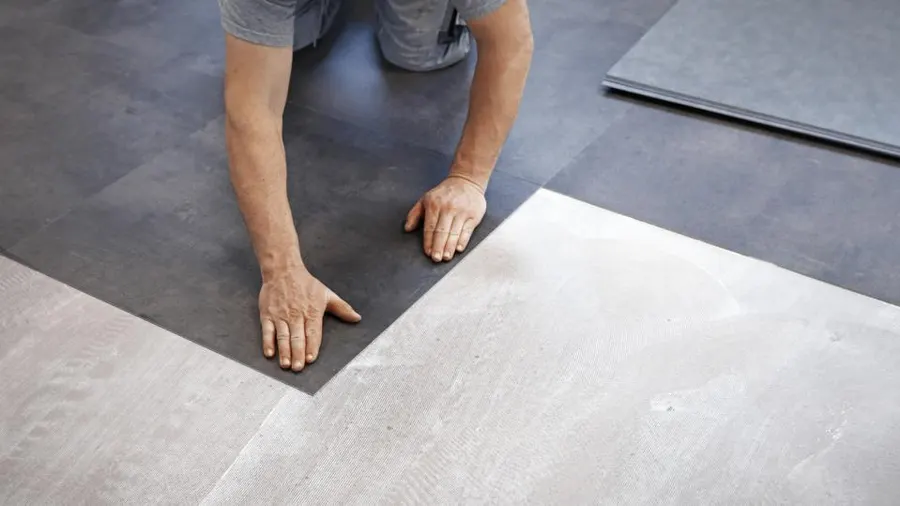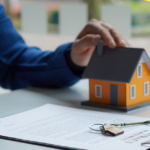
When it comes to flooring, one of the critical considerations is how well the material manages moisture and spills.
Linoleum, known for its eco-friendly composition and resilience, offers several benefits in this regard.
To fully appreciate how linoleum performs under moisture and spill conditions, let’s explore its characteristics, the science behind its water resistance, practical applications, and some best practices for maximizing its lifespan in moisture-prone environments.
Invest smartly in superior linoleum flooring (overlegne linoleumsgulve), combining eye-catching aesthetics with reliable durability to enhance every corner of your property.
The Composition of Linoleum: A Natural Barrier
Linoleum is crafted from a blend of natural materials, including linseed oil, wood flour, cork dust, and resins.
These components are not only environmentally friendly but also contribute to linoleum’s ability to resist moisture.
Linseed Oil: This is a key ingredient that gives linoleum its unique water-resistant quality. Linseed oil is known for its ability to oxidize and create a durable, water-repellent surface.
When applied to linoleum, it forms a protective barrier that helps prevent moisture from penetrating the material.
Wood Flour and Cork Dust: These materials add to the density and texture of linoleum, creating a more compact and less porous surface that naturally resists the absorption of liquids.
Resins: The natural resins used in linoleum further enhance its water resistance by providing a binding agent that keeps the material intact and less prone to water damage.
Water Resistance: What Does It Mean?
Water resistance in flooring refers to the material’s ability to repel water to a certain degree, preventing immediate absorption and potential damage.
While linoleum is not fully waterproof like some synthetic materials (e.g., vinyl), its water-resistant properties make it highly effective in handling everyday moisture and spills.
Spill Management: When liquids are spilled on linoleum, they tend to bead up on the surface rather than soak in.
This makes it easy to wipe up spills without worrying about stains or long-term damage.
The material’s smooth surface also means that even sticky or oily spills can be cleaned without much effort, maintaining the floor’s appearance and integrity.
Short-Term vs. Long-Term Exposure: Linoleum can handle short-term exposure to moisture quite well, such as in the case of a spilled drink or a wet shoe.
However, prolonged exposure, like a constant leak or water pooling, can eventually lead to issues such as warping, curling, or discoloration.
This is why prompt cleanup and preventive measures are crucial.
High-Humidity Environments: Linoleum’s Performance
In spaces with high humidity, such as bathrooms, laundry rooms, or basements, linoleum’s performance can be influenced by the level of moisture present and the duration of exposure.
Bathrooms: Linoleum can be installed in bathrooms, but it requires careful installation and sealing, particularly around seams and edges where water might seep through.
Using a high-quality sealant can significantly improve its resistance to moisture. However, in areas with constant water exposure, like around bathtubs or showers, additional waterproofing measures may be necessary.
Laundry Rooms and Basements: These areas often experience higher humidity levels and occasional water spills.
Linoleum’s natural water resistance makes it a viable option, but ensuring proper ventilation and dehumidification can help prolong its lifespan.
Additionally, placing mats or rugs in high-risk areas, such as near washing machines or sinks, can provide extra protection.
Installation Considerations for Moisture Resistance
The installation process plays a pivotal role in how well linoleum can handle moisture and spills.
Proper installation techniques ensure that the material is less likely to succumb to water damage.
Subfloor Preparation: A clean, dry, and smooth subfloor is essential before laying down linoleum.
Any moisture trapped underneath can lead to problems down the line, such as mold growth or material degradation.
Installing a moisture barrier can further protect against potential subfloor issues.
Seam Sealing: Linoleum sheets or tiles must be tightly sealed at the seams to prevent water from seeping through.
Professionals often use heat welding or cold welding methods to create a watertight seal, enhancing the floor’s overall moisture resistance.
Edge Protection: The edges of linoleum flooring, particularly around walls and doorways, should be sealed with waterproof caulking to prevent moisture from penetrating beneath the surface.
Maintenance Tips for Longevity
Regular maintenance is key to preserving linoleum’s appearance and functionality, especially in moisture-prone areas.
Routine Cleaning: Wiping up spills as soon as they occur is the best way to prevent moisture damage.
Regular sweeping and mopping with a damp (not wet) mop keeps the surface clean and free from abrasive dirt particles that could scratch the protective layer.
Reapplication of Sealant: Over time, the protective sealant on linoleum may wear down.
Reapplying a linoleum-specific sealant periodically can rejuvenate the surface and maintain its moisture resistance.
Avoid Standing Water: In high-traffic areas, ensure that water does not accumulate or remain on the surface for extended periods.
Placing absorbent mats at entry points or near water sources can help manage moisture levels.
Linoleum vs. Other Flooring Options
Understanding how linoleum compares to other flooring materials in terms of moisture and spill resistance can help in making an informed choice.
Vinyl: Vinyl flooring is fully waterproof, making it more suitable for areas with frequent water exposure.
However, linoleum offers a more sustainable option with comparable water resistance for less moisture-intensive environments.
Hardwood: Hardwood floors are more vulnerable to water damage, including warping and staining, making them less ideal for moisture-prone areas.
Linoleum, with its better moisture resistance, is a more practical choice for those looking for natural materials.
Carpet: Carpet can absorb liquids quickly, leading to stains, mold, and unpleasant odors. Linoleum’s smooth surface prevents absorption, making it a cleaner and more hygienic option in areas prone to spills.
Conclusion
Linoleum is an excellent choice for flooring in areas where moisture and spills are a concern, thanks to its natural water-resistant properties and ease of maintenance.
While it’s not entirely waterproof, with proper care, installation, and maintenance, linoleum can effectively handle moisture and spills, offering a durable, eco-friendly, and aesthetically pleasing flooring solution.
For those seeking a balance between sustainability, durability, and moisture resistance, linoleum stands out as a top contender, providing peace of mind in both residential and commercial settings.






